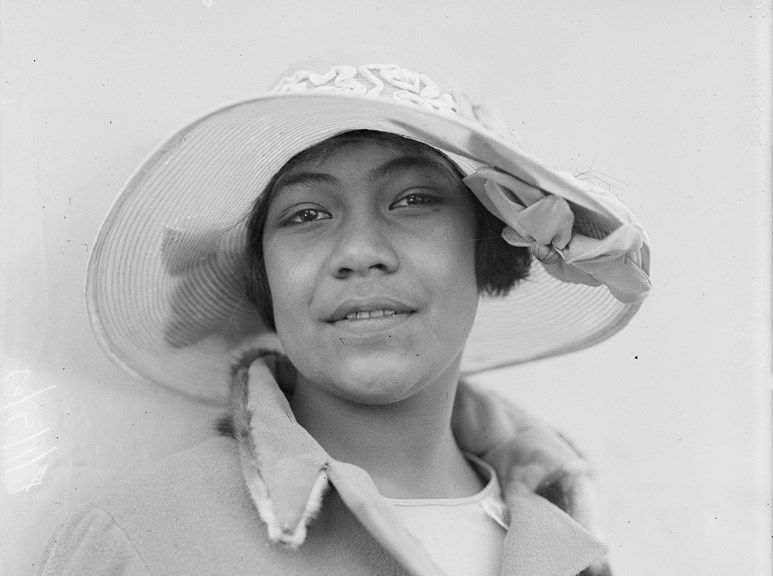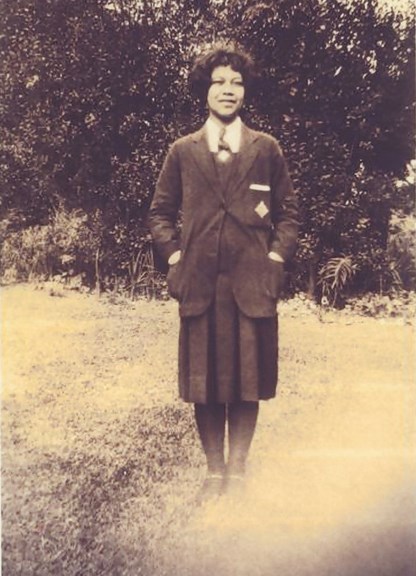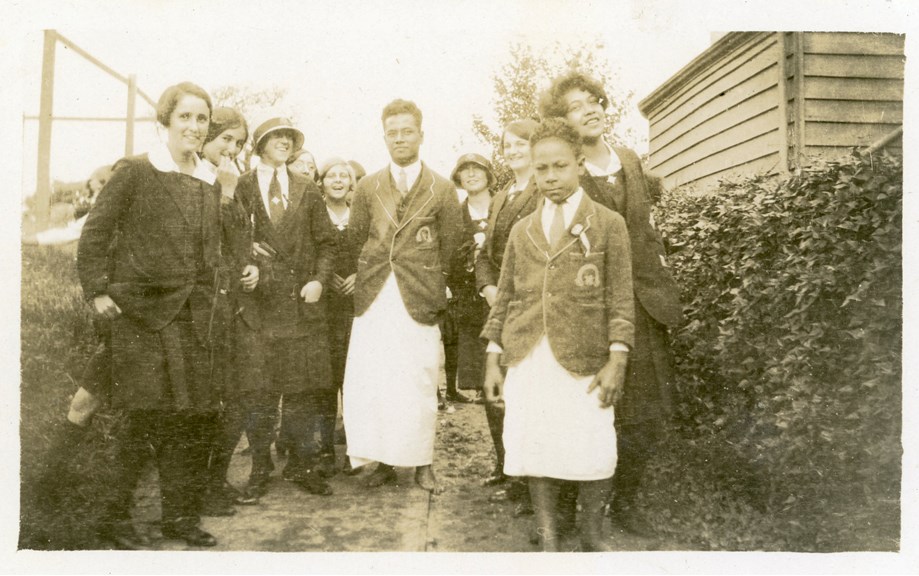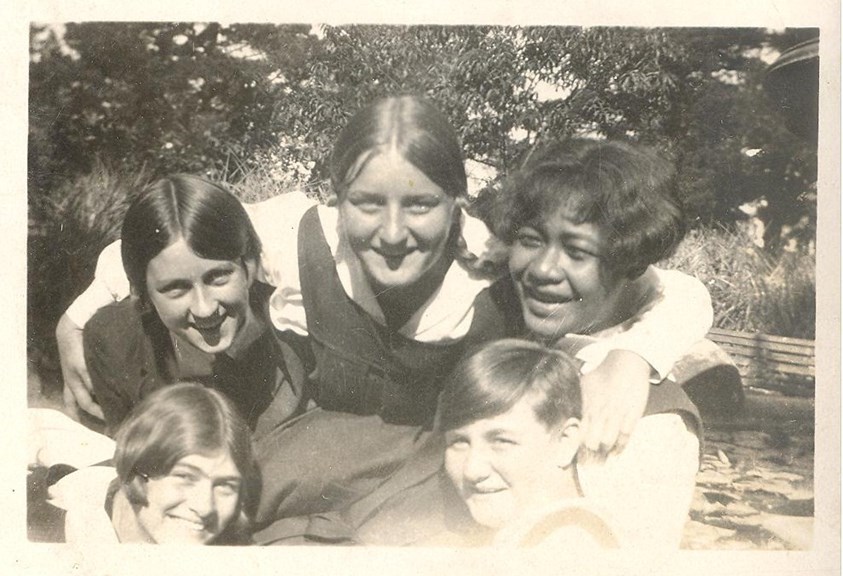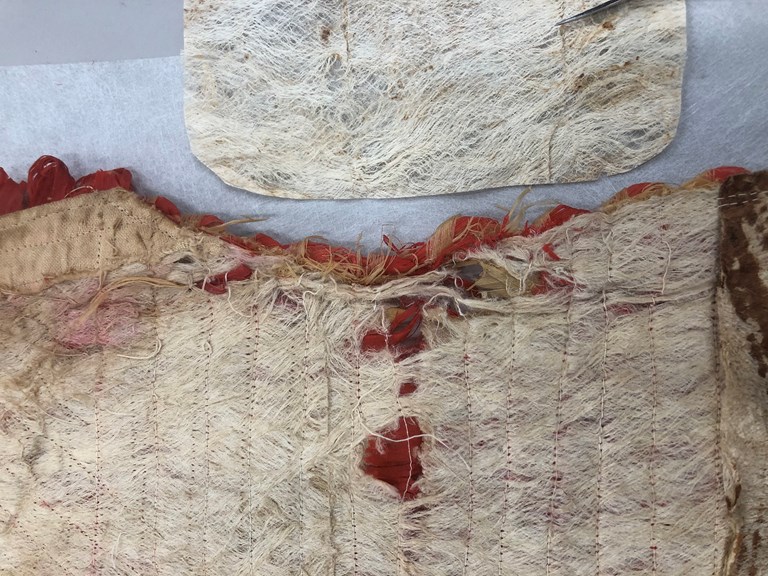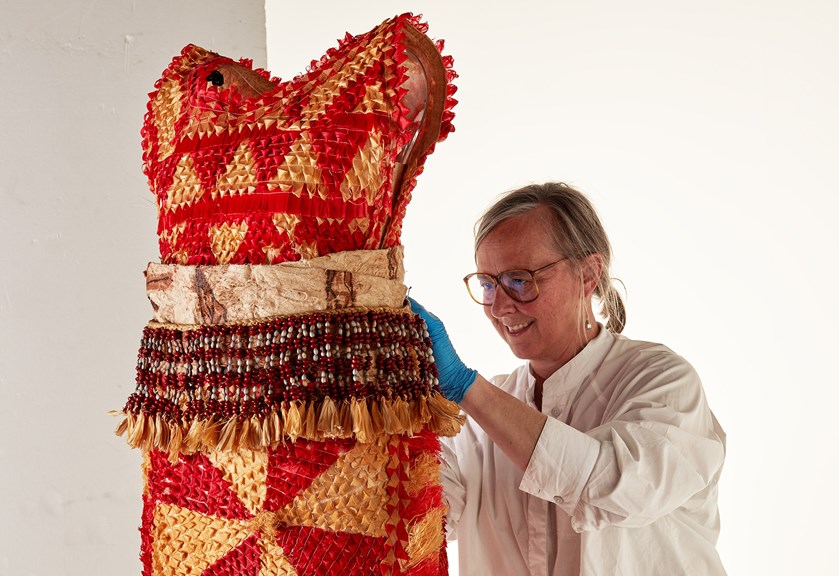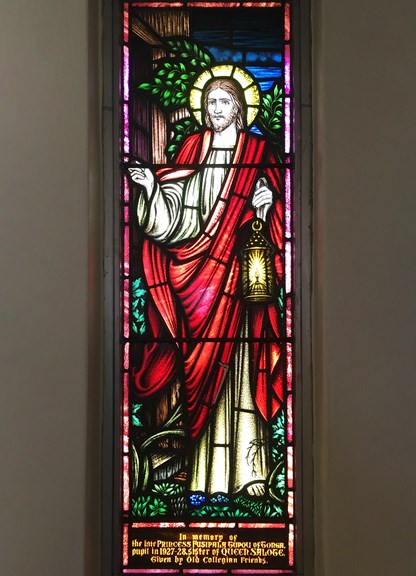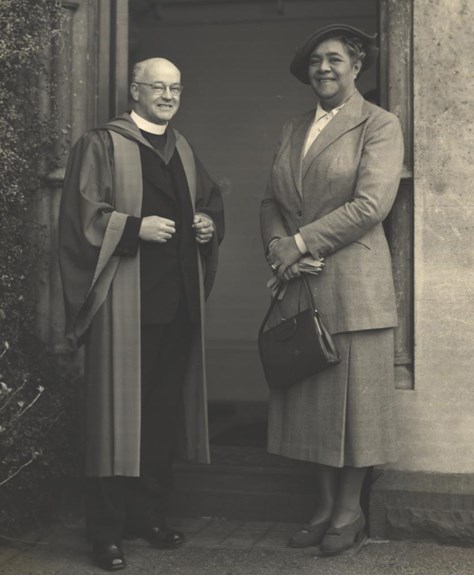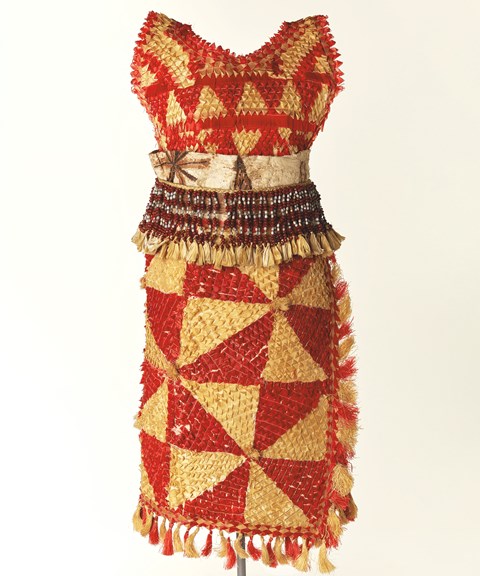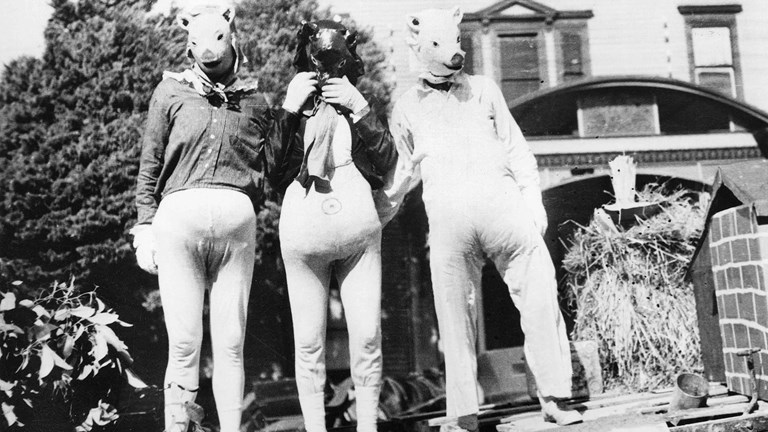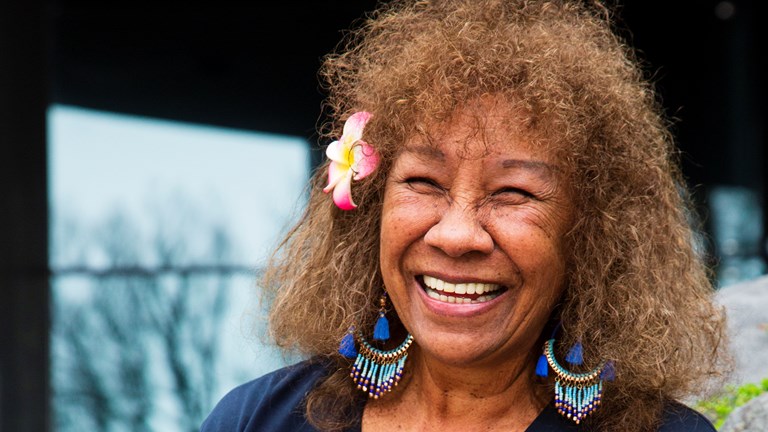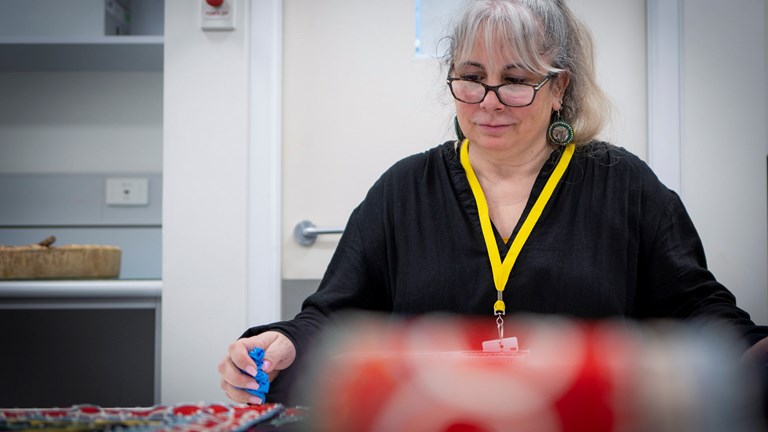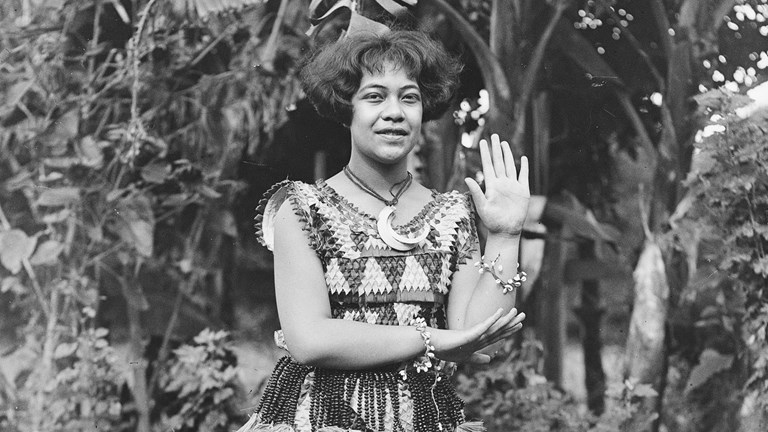
Fusipala: a Tongan princess, a costume and a community that keeps her memory alive
Princess Fusipala’s life story could be viewed as one of tragedy—a young Tongan orphaned by a global pandemic, before her own untimely death at the age of 20.
Yet it is also one of hope—overcoming isolation, finding her passions and surviving beyond her own lifetime in the memory of a community that spans two countries.
Part of that story is a dancing costume, that was only meant to last a short time, living on in its new home at Museums Victoria.
She was born Princess ‘Elisiva Fusipala Tauki’onetuku Tupou on 26 July 1912, the second daughter of Tonga’s King Tupou II and his second wife, Queen Takipō.
Fusipala’s time with her parents was short-lived—King Tupou II died in April 1918, while her mother died from the Spanish Flu in November the same year.
Orphaned at such a young age, Fusipala was cared for by her extended family and 18-year-old sister—the newly crowned Queen Sālote Tupou III, who went on to become Tonga’s longest reigning monarch.
Two years after her parents’ deaths Fusipala was sent to New Zealand to begin her education at Auckland’s Diocesan School for Girls, where she stayed for five years.
What happened next, though, proved to be a pivotal moment for Fusipala, and Tonga’s relationship to Australia.
A princess flourishes in Melbourne
‘Queen Sālote and her Consort, Prince Tungi, thought it would be better to send Princess Fusipala to the Methodist Ladies’ College (MLC in Melbourne),’ says Fusipala’s closest living relative in Australia, Princess Angelika Lātūfuipeka Halaevalu Mata’aho Napua ‘Okalani Tuku’aho.
She is Princess Fusipala’s great-grandniece and High Commissioner of Tonga to Australia.
‘A school friend, Elsie Scholes, confirmed that Fusipala was friendly and popular and developed her gifts for music, for she played not only the piano but also the organ, violin and ukulele and had a good singing voice. She was in demand to perform Tongan dances.
‘When a Tupou College choir toured Australia in the early months of 1928, Fusipala joined in some of their Melbourne concerts by dancing the tau’olunga, playing the piano and singing Drink to me only with thine eyes while the choir hummed the accompaniment,’ says Princess Lātūfuipeka.
It was during this time in Melbourne that ‘Fusi’—as she was affectionately known—debuted a striking teunga | dancing costume that has been the focus of recent attention at Museums Victoria.
Regeneration
As part of a planned regeneration of Melbourne Museum’s Te Pasifika Gallery, Fusipala’s costume was chosen by Tongan elders as the most important item in the museum’s Tongan collection to highlight their culture and the long-standing connection between Tonga and Melbourne.
One of those elders is Reverend Feke Kamitoni, chairman of the Tongan Victorian Association.
‘When you talk to people about the Tongan culture you can’t escape royalty, and when you talk about the history of the country, Victoria is a very special link with Tonga because most of the missionaries that went to Tonga were from Victoria.'Reverend Feke Kamitoni
‘When you talk to people about the Tongan culture you can’t escape royalty, and when you talk about the history of the country, Victoria is a very special link with Tonga because most of the missionaries that went to Tonga were from Victoria,’ he says.
‘Most of our older generation in Australia are trying to preserve that culture where it’s central to have the king, the royalty, the nobles, that sort of set up is still very much alive, so when we realised that piece was here—you can’t have a Tongan collection without them (the royal family).
Reverend Feke says Princess Fusipala’s story, though, isn’t as familiar to younger Tongan-Australians today.
‘In Tonga everyone knows about her story, not so much as Queen Sālote, but we have a story here to tell of her costume, being at MLC and being in Victoria.
‘We’re losing some of our heritage and our history but hopefully this will remind us of our stories, get our young people to be interested in the culture back home but also there is something here they can identify with.
‘To have the costume is something we can identify that she was here—it’s tangible,’ he says.
Restoration
‘Princess Fusipala’s tau’olunga costume was well designed and prepared for her coming to Australia,’ says Princess Lātūfuipeka.
‘Traditionally we use tapa cloth, leaves and flowers for dancing costumes which may only last a day, therefore a lot of work and thought has been put into this costume.’
Fusipala’s former school, MLC, donated her costume to Museums Victoria in 1966 and it remained safely tucked away for the next 50 years—only coming out for royal visits.
Having been made in the 1920s, though, the teunga was starting to show its age.
‘It needed work…there were stability issues, there were tears, creases and missing elements,’ says Karen Fisher, the Museums Victoria conservator who worked with Tongan cultural knowledge-holders to bring it back to life.
The community requested the costume be displayed as it was worn by Princess Fusipala, so Karen collaborated with Aunty Mosiana Sisifa Francis, a Tongan-Australian elder, to develop the best method of conserving it with this in mind.
‘It was very important to preserve the integrity of the outfit,’ says Mosiana.
‘I would have searched everywhere for the right material to use, but fortunately I had the material myself.’
That included seeds for the sisi | beaded belt that change colour from green to red as they age, so they had to be of a similar vintage.
‘When I was repairing the sisi, I felt so privileged to be able to do this and I was thinking about the maker and what they would have done—because I was unpicking their steps…it’s quite an amazing thing,’ says Karen.
Any materials Mosiana didn’t have on hand were sourced from extended family, to make the repairs as authentic as possible.
‘Everything that was undertaken is reversible to a certain extent. For example, the ngatu | barkcloth patches that stabilise tears at the back of the skirt and the top, they can be reversed if it’s decided that in 20 years’ time that’s not appropriate and we need to do something else,’ says Karen.
‘It doesn’t surprise me that it has survived…it is a testament to the maker and materials.’
A sudden end
Princess Fusipala passed away on a return trip to Sydney on 21 April 1933—it is believed from tubercular peritonitis.
She was just 20 years old.
‘It devastated her sister Queen Sālote, and the entire Tongan nation mourned her for months and months,’ says Mosiana.
‘When I was at school at Queen Sālote College (in Tonga) the Queen visited us once a month, and she talked often about her sister.’
Queen Sālote also composed several songs and poems in memory of her sister.
‘Those songs and poems, we still sing them, we still recite them to this day, with the feeling of sadness of her death,’ says Mosiana.
Fusipala’s former school in Melbourne found their own way to immortalise her.
‘A special appeal was launched by her former classmates led by her dear friend Elsie Scholes to raise funds for a stained-glass window in her honour at the Fitchett Chapel,’ says Princess Lātūfuipeka.
And the link forged by Fusipala’s education in Melbourne is one that persists to this day.
‘Queen Sālote was on her way to attend the coronation of Queen Elizabeth II in London and visited MLC in 1953 to lay the foundation of the College’s new Junior school,’ says Princess Lātūfuipeka.
Several Tongan women have since followed in Fusipala’s footsteps and studied at MLC, including the current Queen Nanasipau’u Tukuʻaho who came to Melbourne in the 1960s.
A new home
Princess Fusipala’s teunga is now displayed in pride of place in Te Pasifika Gallery, in the Melbourne Museum—a physical representation of the bond she helped to create between Tonga and Melbourne.
‘We are just honoured to have a piece right here in Victoria to represent the link back home and back to the culture,’ says Reverend Feke.
‘It makes the Museum much more special to us because of the presence of that piece in the collection—you feel the whole Tongan culture is represented.’
Aunty Mosiana says it’s also an important memorial for Princess Fusipala herself.
‘I’m so fortunate to see something that she wore, it’s like…she’s still there, and that is a very important feeling for us here in Melbourne.
‘It is a source of great pride to the community, that our children and grandchildren are able view her costume, hear her story, and relate to the princess on a personal level,’ she says.
And with her teunga, the memory of Princess Fusipala will endure for generations to come.

